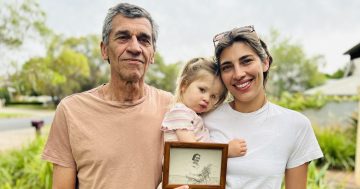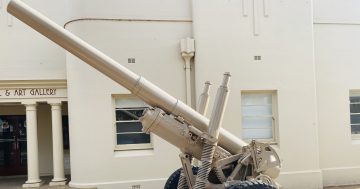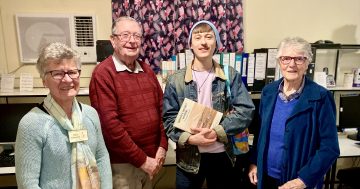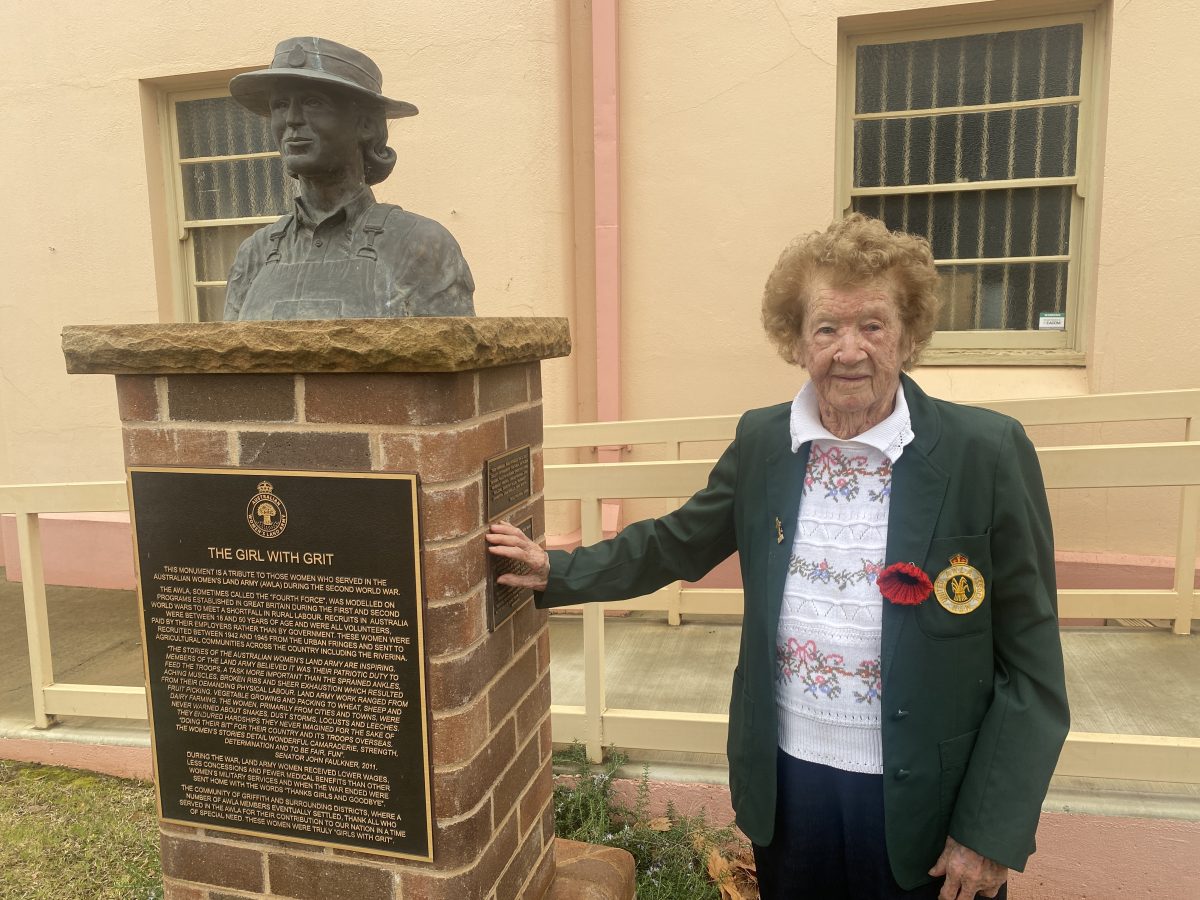
Kathleen Savage at the Girl with Grit monument in Griffith. Photo: Oliver Jacques.
Kathleen Savage, Griffith’s oldest living Land Army member at age 96, has recounted the eight-decade legacy of the all-female service – from earning just $2.50 a week, to the “terrifying” 1944 Japanese Prisoner of War (POW) Cowra breakout, to the fight to allow women to march alongside male soldiers on Anzac Day.
This year marks the 80th anniversary of the formation of the Australian Women’s Land Army in 1942 – the women who voluntarily moved from cities to farms to feed the nation while so many men went overseas to fight in World War II.
While not engaged in direct combat, Ms Savage has had to fight battles ever since the age of 17, when she was first motivated to give up all she had to serve her country.
“My father was a solider, so I really wanted to do this,” she said. ”But at first, they didn’t let me. I was just 17 years old and working at St George’s Hospital [in Sydney]. The government deemed the hospital as an essential service, so wouldn’t allow me to change jobs. I had to take them to court before they eventually allowed me to move.”
Ms Savage’s first placement was at a farm near Bathurst, where she picked asparagus. She recalled it was a tough initiation for the women, some of whom had fairly sheltered lives in big cities.
“It was freezing when we had to get up at 3:30 am to work, and we got so dirty. We all had to have a shower together but I refused to do so. I wouldn’t get in with anyone else, I would just wait. I remember some of the girls wouldn’t work, so were sent back to Sydney.
“We hardly got paid anything, just 25 shillings a week, and we had to pay board on top of that.”
The weekly wage of 25 shillings equates to $2.50. Even adjusting for inflation, in today’s dollars that’s $94 – about a third of the current weekly unemployment benefit, the Newstart Allowance.
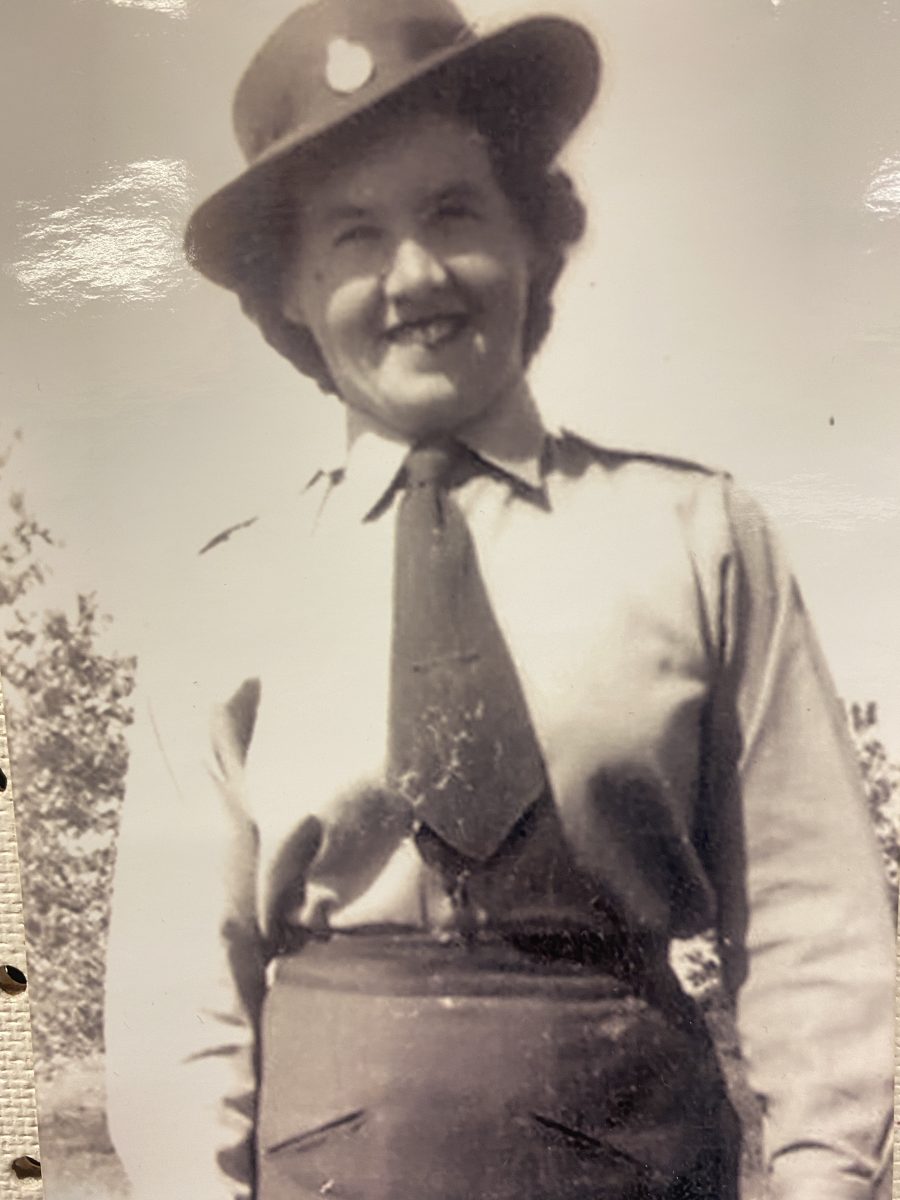
Kathleen Savage in 1943. Photo: Griffith War Memorial Museum Inc.
After Bathurst, Ms Savage was moved on to a farm in the tiny town of Goologong, just outside Cowra, where she picked tomatoes, spinach and potatoes. She was there during the infamous Cowra breakout, when 400 Japanese POWs escaped from a prison camp in town.
“That was terrifying. We were nearby and didn’t know if they were coming our way.”
There were better memories at her next placement, in Nericon, near Griffith, where she picked carrots and met her future husband, Bert.
“He paid me so little that the only way I could increase my pay was to marry him,” Ms Savage joked.
Theo Bolland, a volunteer at the Griffith War Memorial Museum Inc., said: “It was quite common for the Land Army girls to fall in love with the farmer they worked for and settle in the country.”
Bert and Kathleen wed in Cronulla in 1947, settled in Griffith and remained married for 59 years, until Bert died. The couple had three children. Sons Robert and Paul opened Griffith’s GB Sports store, where Mum worked for 32 years.
Ms Savage was also part of a long campaign to allow Land Army members to march alongside male veterans on Anzac Day, which finally occurred in 1986.
“Initially, they said we couldn’t because we didn’t actually fight in war,” she said.
“But we never gave up the fight to be recognised.
“I’ve been marching on Anzac Day ever since.”
Ms Savage was also present when a Girl with Grit statue to honour the Land Army was unveiled in Griffith in 2015, just outside the museum. Shortly after, she took up residence in Pioneer’s Lodge, an aged-care facility. Aged 91, she was severely ill and weighed just 41 kg – doctors told her she was down to her last few weeks. But with the support of family and Pioneer’s Lodge staff, she once again battled against the odds and is now back to good health as she eyes her century.
The Griffith War Memorial Museum Inc., at 167-185 Banna Ave, has records, photos and memorabilia of the Land Army. The museum, staffed by volunteers, is open to the public on Fridays from 10 am to 2 pm and Saturdays from 11 am to 2 pm. Donations are appreciated.







